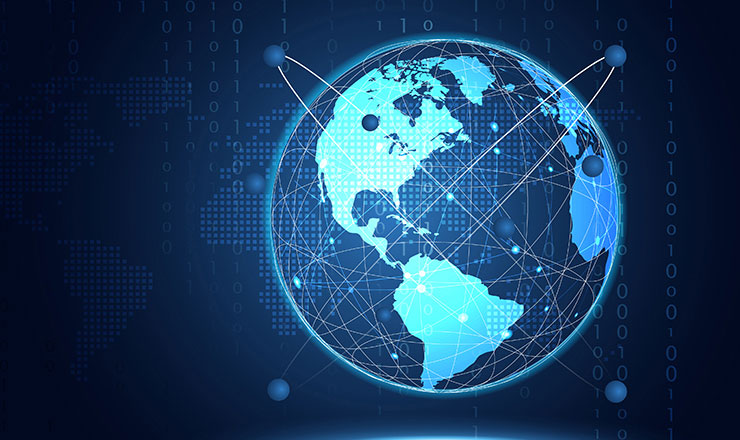What is IT Asset Management?

Take Control of Your Assets
A personalized demo is just one click away.
What is IT asset management? According to the International Association of IT Asset Managers, IT Asset Management, commonly known by its acronym ITAM, “is a set of business practices that incorporates IT assets across the business units within the organization. It joins the financial, inventory, contractual and risk management responsibilities to manage the overall life cycle of these assets including tactical and strategic decision making.”
There are many ways to approach IT asset management. What’s the best approach? The answer really depends on the needs of the organization at hand, but we can make two recommendations that almost universally apply to any entity, large or small.
1. Manual tracking invites risk
First, manual IT asset management is generally something users should avoid due to its inherent opportunities for error. By “manual,” we mean a process that likely requires an employee or employees to manually key in the unique barcode IDs for each IT asset into an Excel spreadsheet. It’s very easy under those circumstances to enter a typo. It’s also easy to lose track of IT assets or forget to record such details as maintenance details, preventative maintenance schedules, software updates, warranty information, and other critical information that you’ll need to effectively manage the lifecycle of the IT asset.
Excel doesn’t allow users to consolidate information, and the information isn’t necessarily in real time. Ghost assets are more likely to occur – in other words, users may be continuing to pay insurance on items that aren’t even in their IT asset inventory anymore but weren’t recorded as lost, stolen or retired from inventory. Not only is manual IT asset management an open invitation for mistakes, it can also result in wasted money and time when employees have to hunt down assets they can’t locate.
2. Automation rules
An automated approach to IT asset management is a smart move for almost any organization because it allows employees to focus on their other priorities. IT managers, meanwhile, enjoy peace of mind knowing that their IT data is in real time and that it’s accurate. Therefore, they can make strategic decisions about their IT assets with confidence. The increased transparency that IT asset management software provides allows asset managers to, for example, determine that they’re short critical IT assets or that they have idle assets that can be transferred to where they’re needed. Asset management software consolidates asset data in one easy-to-access location, eliminating the need for employees to comb through paper and electronic files for warranties, purchase or lease information, and other records. Ideally, every stakeholder involved in the lifecycle of your fixed IT assets has access to the platform, which subsequently eliminates communication gaps and raises accountability throughout the organization.
ITAM vs. ITSM
While you’re researching ITAM solutions, you may spot the acronym ITSM, which stands for IT Service Management. Are they different? In short, yes.
Both ITAM and ITSM are acronyms that describe processes designed to help users maximize the respective lifecycles of their IT assets and achieve improved efficiency and savings of time and money. That’s where the similarities end, however. Comparesoft.com, a software comparison technology company, explains that these two disciplines “view a business’s entire IT environment from two different perspectives,” and while they overlap at times, “ITAM offers benefits that ITSM can’t – and vice versa.” ITAM, as described above, is intended to lower costs and minimize potential risks incurred over the lifecycle of an asset. Assets that are typically covered by ITAM include everything from mobile devices, cloud assets, locally installed software and stationary hardware. The common thread among these IT assets is their monetary value as well as the risk they could present from a legal, operational and/or financial standpoint.
According to Comparesoft.com, ITAM may be divided into two subcategories: Software Asset Management (SAM) and Hardware Asset Management (HAM). SAM, not surprisingly, is aimed at maximizing the value of return on investment of software assets, while HAM focuses on the management of physical IT assets and often incorporates the use of asset tags and barcodes for accurate, real-time tracking.
ITSM maintains a focus on the delivery and value of IT services, versus physical IT assets, and includes several processes including incident management (through an IT service/help desk), change management (oversight to ensure that significant modifications to the IT landscape are completed efficiently and accurately with minimal disruption to the business environment, and service asset and configuration management, that focuses on the relationships between IT assets (an example of where you can see overlap with ITAM).
What to look for
As you begin your search for the best IT asset management solution for your organization, consider the following.
Ease of use
You need all of your stakeholders on board with your IT asset management efforts – and to do that, you’ll need an easy-to-use solution with an intuitive interface. That doesn’t mean the platform shouldn’t be powerful and scalable – it should be – but the best software has been carefully designed to make it easy for even the most technically challenged employee to get on board and acclimate quickly.
Audits
IT asset management software helps users get a baseline of the IT assets they currently have. Companies should make audits a routine part of their business practices. The best software helps them conduct those audits easily and accurately, and they can also set up custom reminders so they don’t overlook them. Audits will reveal any gaps or errors in recordkeeping and enable asset managers to correct issues – like ghost assets or failure to comply with software license terms, for example -- before they become more expensive problems.
Flexibility
Users should be able to store and track comprehensive information on each of their assets and arrange and display it however they want. It’s important to note that some IT asset management products don’t offer that kind of flexibility. As your company and your IT asset inventory evolve, you should also be able to make changes at any time to the way you’ve organized your data. The ability to add photos, voice notes, videos and/or documents is beneficial, as you’re able to store the complete lifecycle of your assets in a single location. Custom features like reports, security settings based on location or function, and reminders/alerts are also advantageous.
Real-time data
Real-time data is everything because IT assets are continually in a state of change, passing from one department to another, from one employee to another. Their value changes over time and must be tracked accurately for accounting and tax purposes. Software license use also must be tracked accurately for compliance and operational efficiency. IT asset managers can’t make decisions about the assets they need to purchase or retire from inventory unless the data they’re looking at is up to date. A cloud-based IT asset management solution provides that kind of real-time data.
Mobile
Mobile access also is a must-have, as a great deal of the business day takes place away from the office. Employees who can pull up asset-related information from their mobile devices don’t have to make a call to the office or wait until they return to their desks to get answers to the questions they have now.
Asset Panda is one of the most comprehensive solutions you’ll find on the market today. Our easy IT asset management software works the way you do and offers complete flexibility to manage your assets exactly how you want. The software offers unlimited fields and configurations and easily integrates with legacy systems.
Our mobile app includes built-in barcode scanning and fully integrates with the web app. Asset Panda integrates with some of the world’s leading software. Users can even use Asset Panda to generate and print barcodes, or they can talk with one of our experts who will help them choose the durable labels they need for their unique working conditions. Asset Panda truly is an end-to-end solution that manages the entire lifecycle of each of your IT assets. To learn more, visit assetpanda.com.
Take Control of Your Assets
A personalized demo is just one click away.
Related News & Press

Learn more from an Asset Panda expert
Get a FREE consultation with an asset tracking expert to find out how you can transform your asset tracking.
Contact our Sales Team at (888) 928-6112


